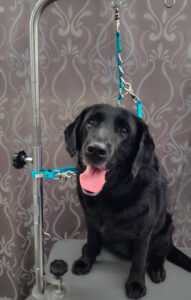
Glossary of Dog Training Terms
March 7, 2017
Are you about to start training your dog, or enroll your pet in a professional trainer’s class? The following dog training terms are commonly encountered, and to give you a head start we’ve defined them for you.
Reward Marker
A reward marker is a word or sound that you use to communicate to your dog that he’s done the correct thing. Examples of a reward marker would be the words “good dog” or “yes,” or the click of a training clicker. One of the most important things to remember when using your reward marker is to deliver it in close proximity to the behavior that you are reinforcing.
No-Reward Marker
In the same way that correct behaviors are marked with a reward marker, incorrect behaviors must be communicated to your dog using a no-reward marker. You want your dog to understand that the no-reward marker means that no opportunities for reinforcements are currently available. I like to use a sound such as “ah-ah,” and saying it using an edge to your voice.
Release
Releasing your dog simply means that you are letting him know that he is done with that certain behavior and is free to move (kind of like letting a child know that he is done with a time out). In order to advance with dog obedience, you must condition yourself and everyone who interacts with your dog to release him every single time. If you don’t, your dog will become confused.
Socialization
Socialization is one of the most important things that you can do for your puppy. Socialization means that you are introducing your puppy to a variety of places, people, sounds, surfaces to walk on, etc., so that they are non-reactive to these things. The critical socialization period for puppies is four to sixteen weeks of age. This is the period of time that puppies are the most accepting to new things.
Body Language
Dogs use their body language to communicate. They are not verbal. Yes, we can teach them verbal commands, but their natural means of communication is with their bodies. It helps if you learn what your dog is saying to you with his body language and if you learn to communicate back to your dog using your body language.
Negative Punishment
Negative punishment is when the desired object is removed from the dog. An example would be if your dog is demanding that you play ball with him by standing by your side and barking at his ball. By picking up the ball and putting it up where it’s not accessible to your dog, you’ve implemented negative punishment.
“No Free Lunch” Policy
The “no free lunch” policy means that your dog is not handed everything for free. Much in the same way that you work for things that you want, it’s important to make dogs work also. This can include a treat, his food, playing fetch, going out for a walk, and even affection. Dogs love to work and need that mental challenge.
Resource Guarding
Resource guarding means that a dog feels threatened when a human or another dog comes around him when he has a possession. The dog gets nervous that his possession is going to be taken away and begins to warn the threat to back off. He uses his body language to do this. He may begin to consume his food faster, become very stiff and hold his body lower, growl, and/or even bite. There are different levels of resource guarders and a dog that is a high level guarder can be very dangerous. If your dog is a resource guarder it’s important to research and seek help to fully understand this issue.
Separation Anxiety
A dog that has separation anxiety exhibits signs of anxiety when left alone or when he even thinks he’s going to be left alone. The dog may be glued to your side, destroy barriers or exits, yip or vocalize, poop or pee in the house, etc. These are all ways that help your dog reduce his anxiety. This is another behavior that may require the assistance of a professional trainer.
Trigger
A trigger is anything that is a signal to your dog. Examples can be the door bell, your leash, the crate, your coat or keys, a rain storm, etc. Understanding triggers is the first step to correcting unwanted behaviors.


